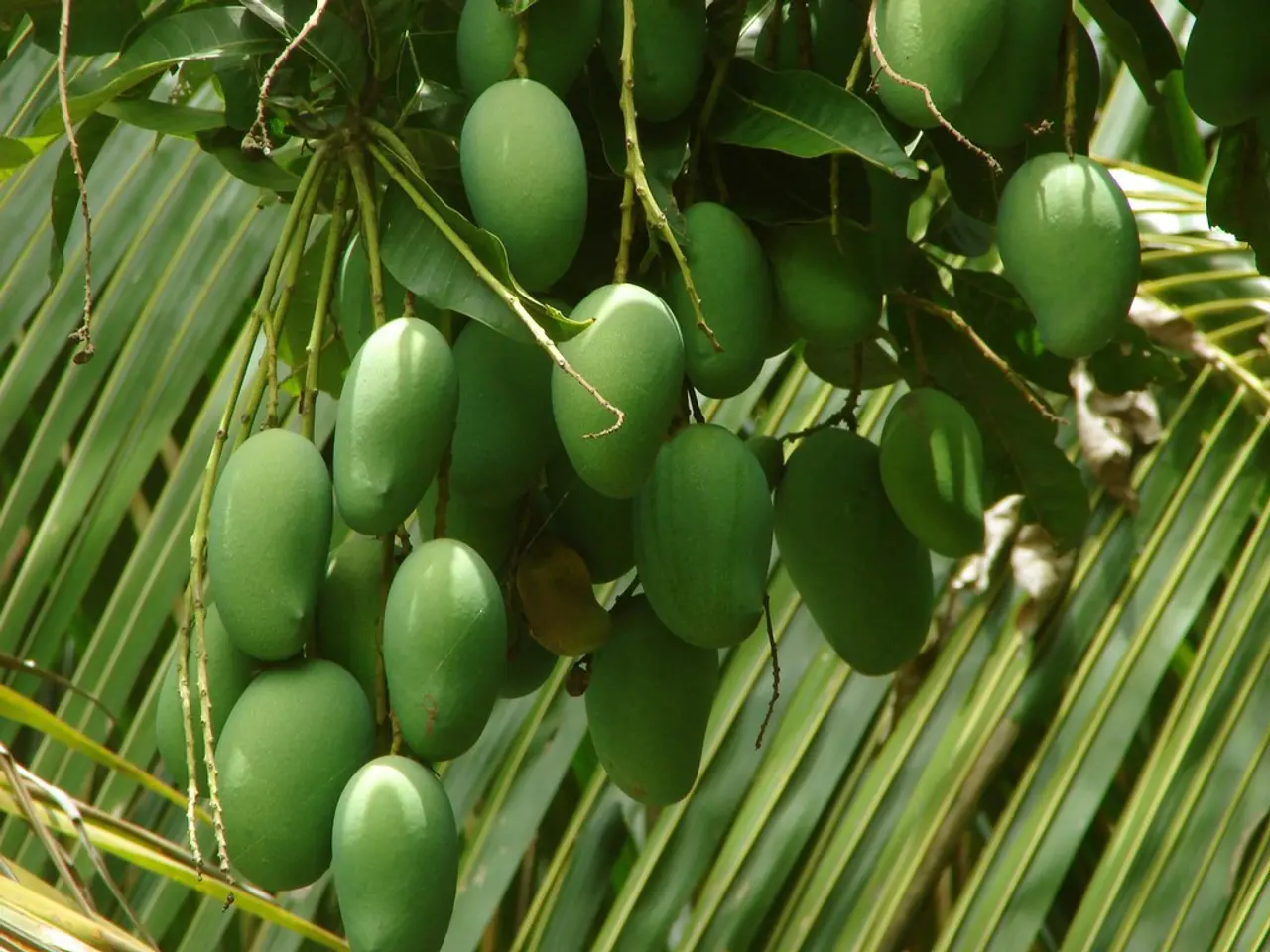Mango Tree Drip Irrigation: Detailed Instructions for Implementation
In the bustling city of Chennai, the adoption of drip irrigation for mango farming is transforming the agricultural landscape. This innovative watering technique offers significant benefits, enhancing water use efficiency, improving mango yield and fruit quality, and reducing water consumption by around 35%.
Key advantages of drip irrigation include consistent soil moisture, reduced drought stress on mango trees, water conservation through minimized evaporation and runoff, economic gains from higher yields and better fruit quality commanding premium market prices, and lower labor costs due to less frequent irrigation and weeding. When combined with mulching and cover crops, it also contributes to enhanced soil health.
Setting up a drip irrigation system for mango farming involves several steps. First, land and orchard preparation includes clearing and levelling the field, preparing planting pits of recommended size for mango trees. The drip irrigation layout is then designed, planning the placement of main supply lines, sub-mains, and lateral drip lines to reach each mango tree’s root zone efficiently.
Next, the system components are installed. Main pipes connected to a water source with filters and pressure regulators are laid, followed by the attachment of drip lines with emitters near the base of each tree. Mulching and soil cover are applied around the trees to retain soil moisture and reduce evaporation.
The system is tested for uniform water distribution, and leaks or blockages are fixed. Irrigation is then scheduled based on crop water requirement, climate, and soil moisture monitoring to optimize water use.
In Chennai's climate, adopting drip irrigation with mulching and other soil-water conservation practices is especially beneficial for managing water scarcity and improving mango orchard productivity. This approach is supported by government subsidies such as the PMKSY (Per Drop More Crop) scheme.
Traditional mango farmland arrangements space trees about 10 to 12 meters apart, with each tree having at least a couple of emitters for even water distribution. Sand or gravel filters are crucial for removing impurities from the water, preventing clogging in the emitters.
Young mango trees require more frequent watering, especially during the establishment stage, with around 10-15 liters per day for the initial few months. Mature trees, on the other hand, require less frequent but larger watering, around 80 liters per week depending on soil type and climate.
Drip irrigation can reduce water usage by 30-50%, making it an eco-friendly and suitable option for water-scarce regions like Chennai. The water source for the drip irrigation system can be a well, borewell, or water tank, with borewell water being common in Chennai and similar districts.
High-density polyethylene (HDPE) pipes should be used for the mainline and sub-main pipes for robustness and versatility. Adding strain regulators and a siphon ensures a constant flow of water across the entire estate, particularly if the water source has low pressure. A siphon may be necessary to ensure sufficient water pressure, especially on large mango farmlands.
In conclusion, integrating drip irrigation in mango farming in Chennai improves water efficiency and productivity while reducing costs, making it a climate-resilient and economically viable approach. This technique, coupled with government subsidies, presents an attractive proposition for mango farmers seeking to boost their yields and profitability in the face of water scarcity.
- The home-and-garden hobbyist might find that the information on efficient mango farmland irrigation, like that of the drip system used in Chennai, can be applied to their own backyard gardening, saving water and improving plant health.
- As technology advances, there may be opportunities to integrate data-and-cloud-computing solutions into large-scale mango farmlands in Chennai, enabling real-time soil moisture and weather monitoring, optimizing irrigation and ensuring water conservation.
- Adopting a lifestyle that emphasizes sustainability and water conservation, as demonstrated by the modern mango farmland in Chennai utilizing drip irrigation, could help protect and preserve both the environment and local communities, especially in water-scarce regions like Chennai.




